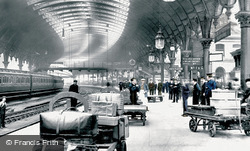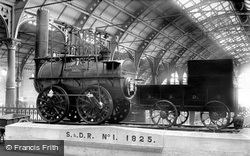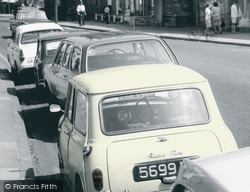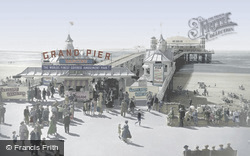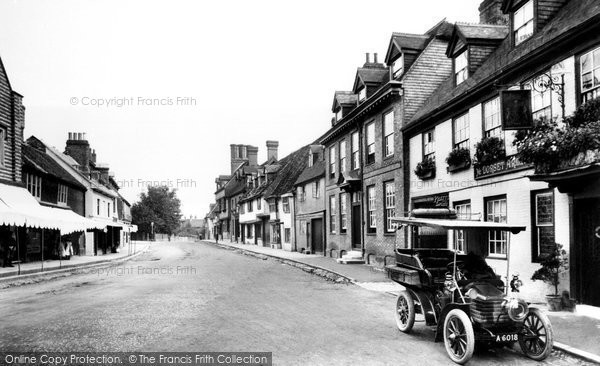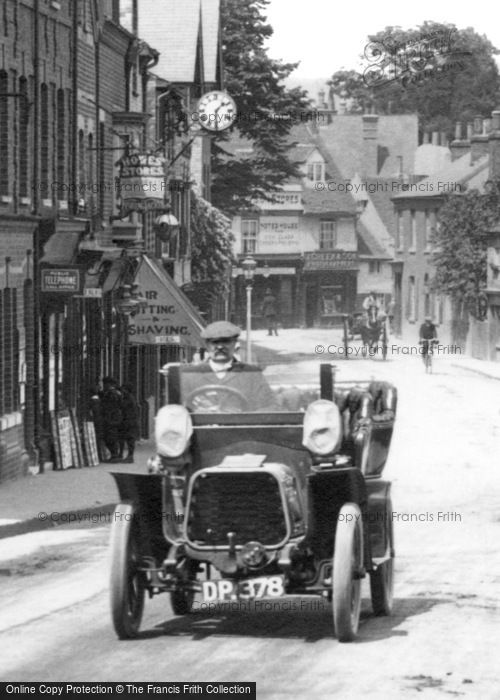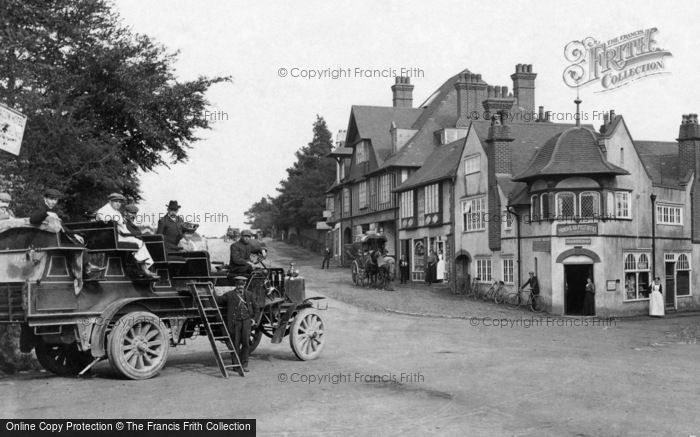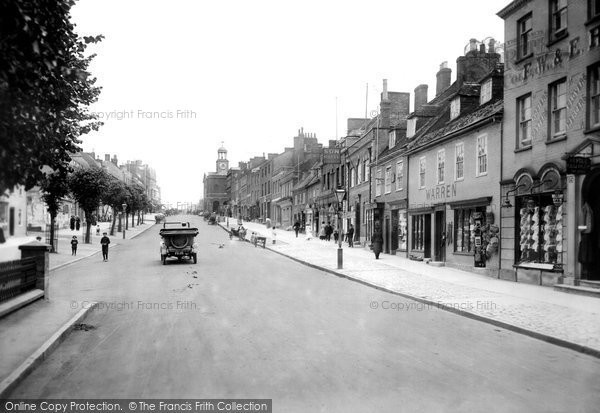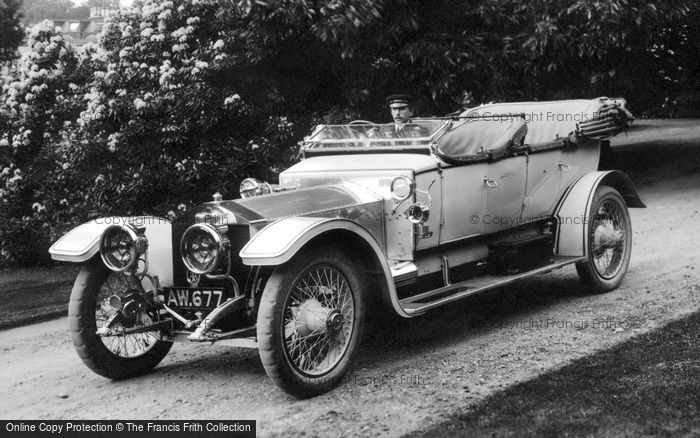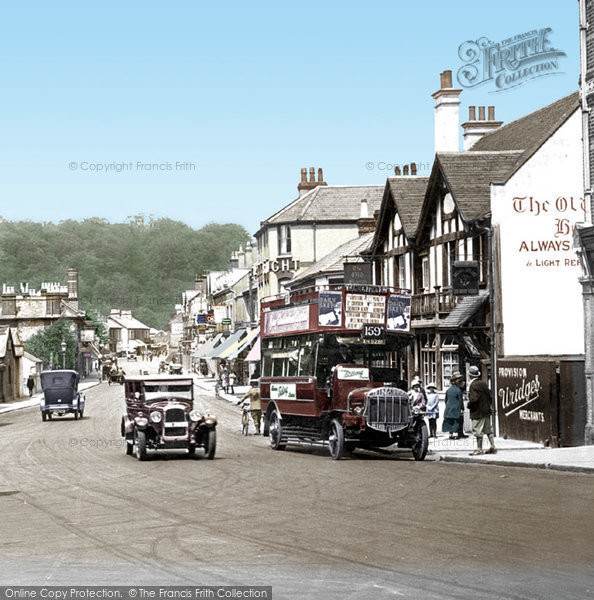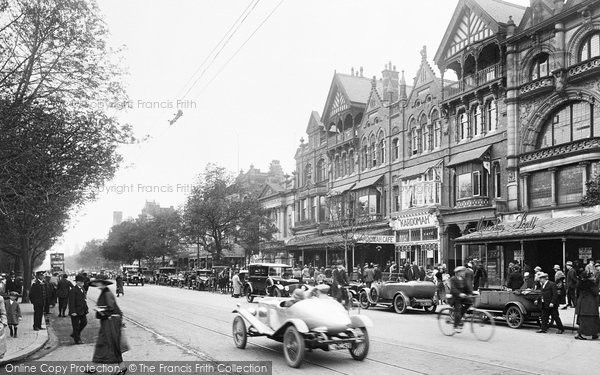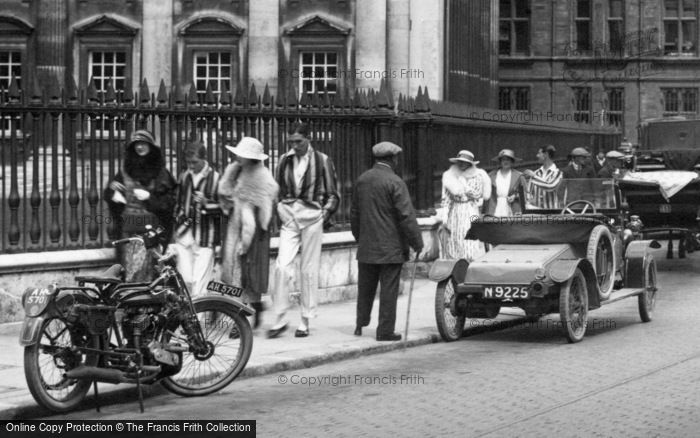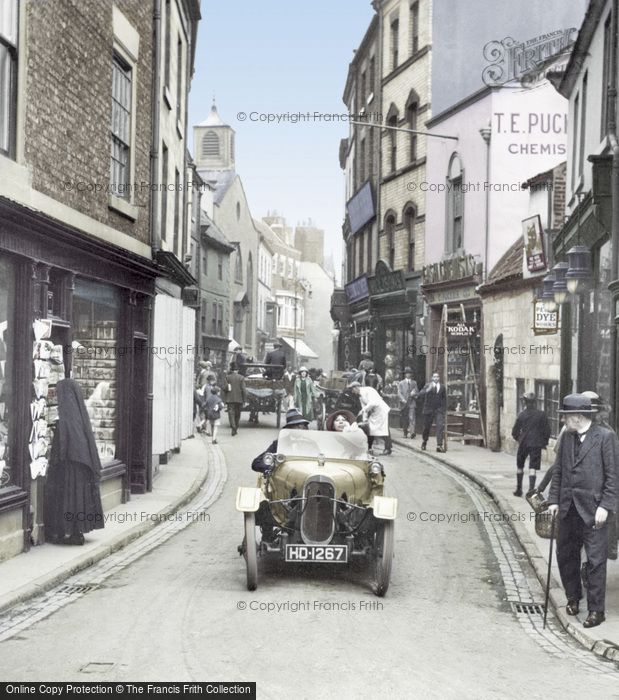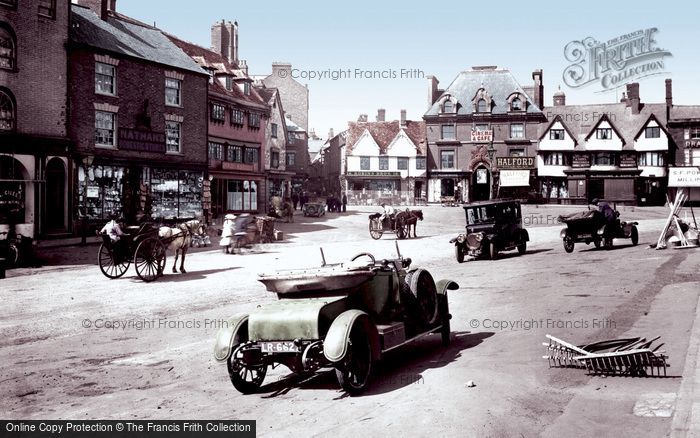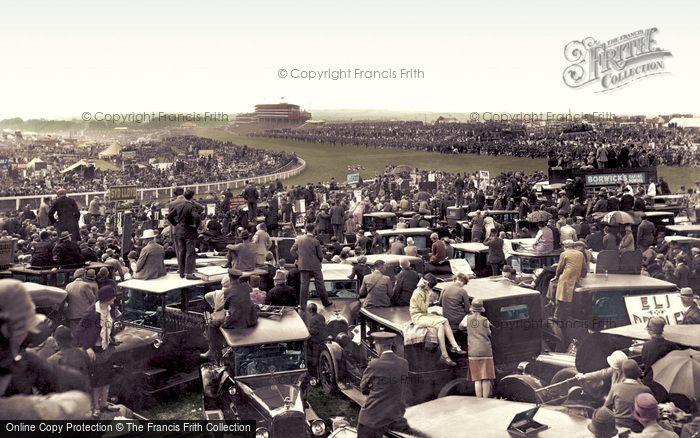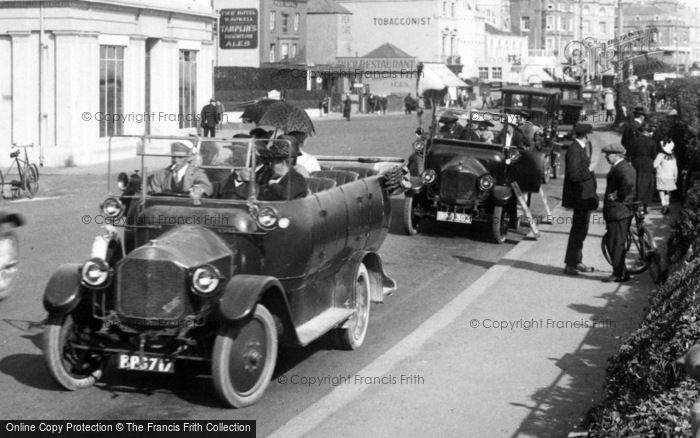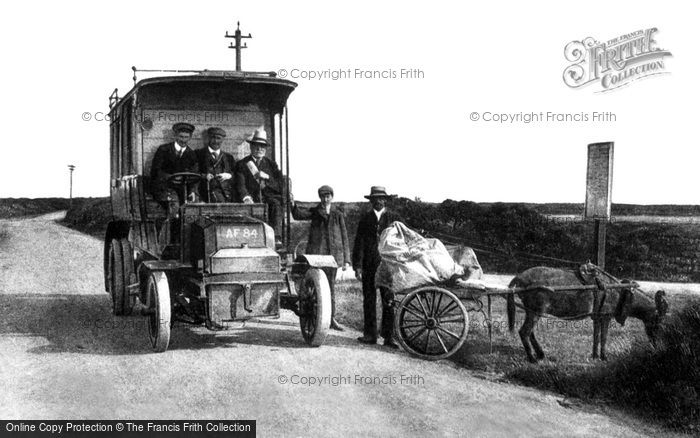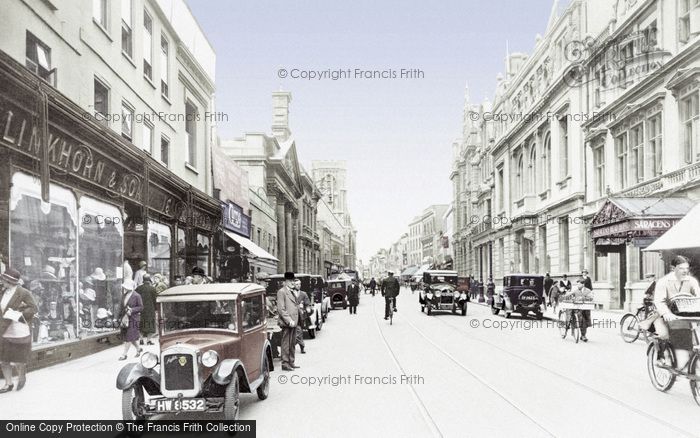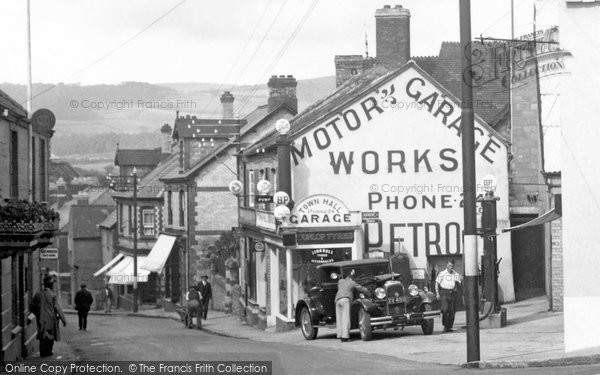Vintage Cars & Motoring
Published on
May 6th, 2016
In the autumn of 1908 the first Model T car was produced by the Ford Motor Company. Henry Ford's revolutionary production line system made the Model T cheap enough to put motoring within the reach of the 'great multitude' and our love affair with the internal combustion engine began to take off.
Here we feature a special selection of Frith photographs of those years of early motoring, in all their running-boarded, leather-goggled splendour!
The motor car in this photograph has one of the earliest registration plates (London, 1904) and may have been one of the first cars ever seen in East Grinstead!
Westwards up West Street to the Town Hall (left of centre), a Ford Model T passes the shops of Best, Warren and Spiller (right). Their names are now familiar, as is that of William Kingman's Sun Hotel. The early car registration plate is FX115. 'FX' were Dorset's first letters, starting with FX100, but 'BF' had been allocated to the county. The Lord Lieutenant protested to Whitehall: 'If you pause for a moment to reflect what the military man in the street is going to think of my passing, then you will realise my hesitation at accepting the designation Bloody Fool One.' So 'FX' was issued instead and 'BF' remained available for half a century, until Staffordshire accepted the letters without complaint. Barrack room swearing had obviously moved on by then.
This photograph was taken at Pell Wall Hall which was built in the 1820s by the architect Sir John Soane. In recent years, having been abandoned, vandalised and finally set on fire, it has recently been restored.
During the 1920s two-seater light cars made in the sports form were becoming popular. They were easily recognizable with their polished aluminium bodies and pointed tails, and were capable of speeds approaching 70mph. IN this photograph a sporty pair zoom along Lord Street. In the 1920s Southport, along with Blackpool, Skegness and Porthcawl, held speed events for sports cars along the sands or the promenade, and it was possible to tax and equip high-powered cars such as the 2-litre Grand Prix Sunbeam for use on the roads.
Poop poop! Mr Toad might drive in just such a car! This was the older of Whitby's two shopping streets. Puckrin's chemist's shop (the white building on the right) stood for a further forty years. The bell tower of St Ninian's Church is just visible in the centre, and the nun on the left could well have been from either of the two convents in the town.
The artist Dame Laura Knight regularly visited the Derby in the 1920s in a Rolls Royce because it had a roof high enough to accommodate an easel inside. She made several sketches of the crowd, including Prince Monolulu, the black tipster who made a name for himself with his exotic attire and cries of "I gotta horse!" He came from St Thomas in the West Indies, but always gave his origin as Abyssinia because people had more respect for it.
Blinkhorn & Son is clearly to be seen on the left, and beyond that is Currys electrical store, which also sold cycles. The pillars of Eastgate Market announce the entrance to this busy shopping centre. Note the wonderful carvings on the buildings on the right by the old Saracens Head hotel. The cyclist on the extreme right is about to pass the Hippodrome cinema, which burned down in October 1955.
Perhaps you'd like..?
If you liked our "Vintage Cars & Motoring" Blog Feature, you might like to see and follow this
Francis Frith board over on Pinterest.
Join the thousands who receive our regular doses of warming nostalgia!
Have our latest blog posts and archive news delivered directly to your
inbox.
Absolutely free. Unsubscribe anytime.

